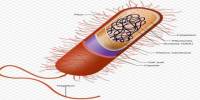Enterotoxins are a type of toxin produced by specific bacteria that predominantly harm the intestines. These toxins cause symptoms including vomiting and diarrhea, which are commonly associated with food poisoning. Enterotoxins are heat-stable proteins that can endure high temperatures, making them resistant to traditional food preparation processes.
An enterotoxin is a protein exotoxin produced by a bacteria that targets the intestine. They can be chromosomally or plasmid-encoded. They are heat labile (>60⁰), low molecular weight, and water-soluble. The bacteria that create enterotoxins can contaminate food during processing or handling, and when consumed, the toxins are released into the intestine. Once in the intestines, enterotoxins attach to specific receptors on the cells lining the intestinal wall, interrupting normal cellular activities and causing the typical symptoms of food poisoning.
Enterotoxins are typically cytotoxic, killing cells via affecting the apical membrane permeability of mucosal (epithelial) cells in the intestinal wall. They are primarily pore-forming toxins (mainly chloride pores) released by bacteria and combine to form pores in cell membranes. This causes the cells to die.
Staphylococcus aureus, Bacillus cereus, and some strains of Escherichia coli (E. coli) are among the most prevalent bacteria that create enterotoxins. The intensity of symptoms varies according to the type and amount of toxin consumed, as well as the individual’s sensitivity. Enterotoxins are commonly heat-stable, which means they can tolerate cooking temperatures that would normally kill the germs. This resistance contributes to their capacity to cause illness even after infected food has been cooked.
Foodborne disease caused by enterotoxins can be avoided by following basic food handling, storage, and hygiene measures that reduce the chance of bacterial contamination. This includes thoroughly cooking food, preventing cross-contamination between raw and cooked meals, and maintaining clean food preparation surfaces and utensils.
















